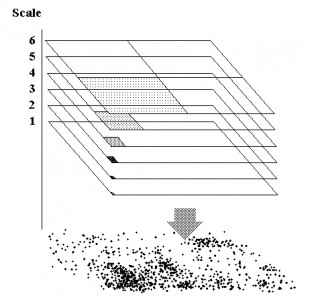The Mysterious Taylor’s Power Law – Part I

Interesting statistical properties of population dispersion emerge from the simulations of the Zoomer model (search Archive), which represents the population level variant of my Multi-scaled random walk model (MRW). The Zoomer model seems to offer a potential to cast new light on a particular scaling pattern, Taylor’s power law (Taylor 1961, 1986), which has been a nagging stone in the shoe for population ecology for more than 50 years. Taylor’s power law is one of the most widely tested empirical patterns in ecology and is the subject of an estimated thousand papers (Eisler et al. 2008)! Despite this effort, a consensus to explain it has still not been obtained (Kendal and Jørgensen 2011). The scale-free pattern has been observed far beyond animal populations: Taylor’s law is remarkable in that it is evident over the scale of a single chromosome (Kendal 2003, 2004) to the lungs of mice (Kendal and frost 1987), a farmer’s field (Kendal 2002), and upward to the breadth of the Britis...
